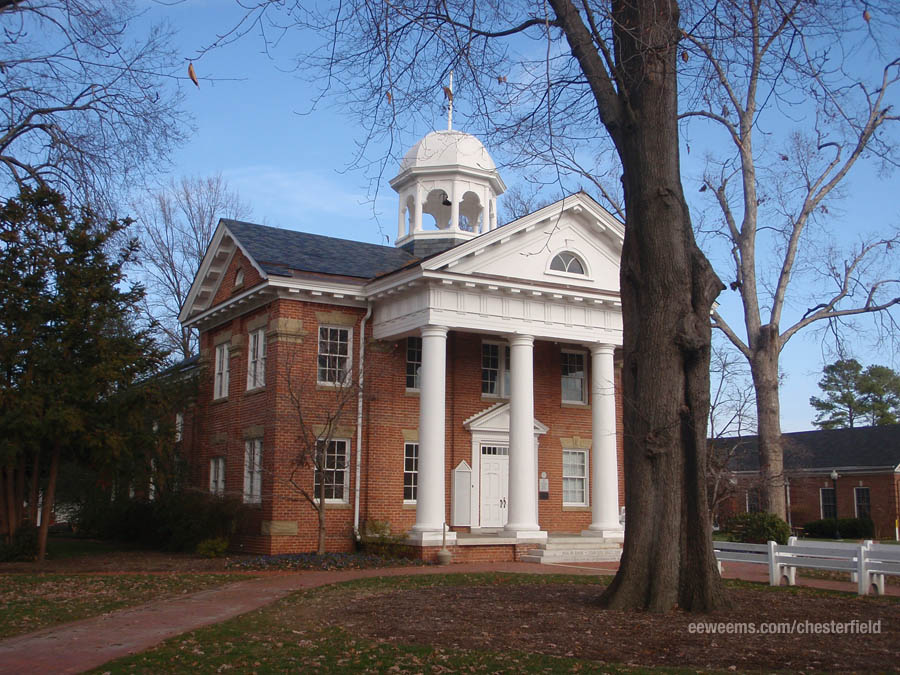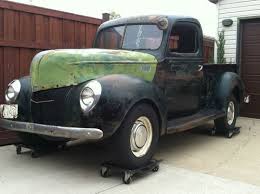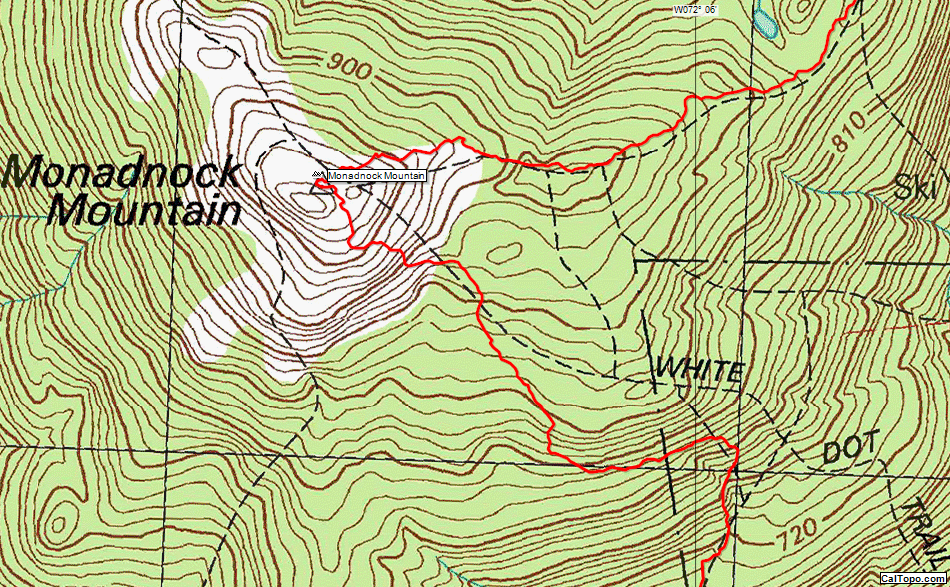Chesterfield County Genealogy, Wills, Marriage Bonds, Indexes to Probate Records
Chesterfield County was formed in 1748 from part of Henrico County. Early settlers: John Archer, Stephen Cheatham, Richard Baugh, Abraham Bowman, Benjamin Granger, Creed Haskins, Caleb Davis, Burrell Parkinson, David Watkins, Daniel Gill Sr., Elick Moore, Essey Worsham, Francis Dyson, William Vaden, John Dier Sr., John Frailey, James Ferguson, Henry Walthall, Henry Turpin, Gregory Grant, Gilbert Elam, George Hastings, and Francis Mean, Hamblin Cole, Joseph Bills, Ambrose Cobbs of the Cobbs of America family, and more.

Digital Images of Wills 1774 to 1785
Testators: Adams, William;Adkins, William;Allen, Elizabeth;Allen, Joseph;Anderson, John;Ashworth, Isaac; Barksdale, Collier; Barnes, Henry Jr.;Bedford, Stephen; Bedford, Thomas;Boulden, Thomas;Brent, John;Bunkley, Joshua; Burton, James;Caldwell, David;Cardwell, Richard;Cargill, Daniel; Carter, Christopher;Carter, John;Childers, Jeremiah;Christopher, William;Clements, Francis;Coles, James;Collier, Thomas;Comer, Elizabeth;Cunningham, James;Davenport, Jack Smith;Davis, William; Dawson, William;Dickerson, Jane;Dudgen, Richard;Dudgins, William; East, William Sr.;Edenfield, Thomas;Farrar, Charles;Fletcher, Mary;Foster, George;Francis, James;Fuqua, Elizabeth;Fuqua, Samuel;Grigg, James;Gwin, George;Haley, James;Hall, William; Hannah, John Sr.;Harra, Isabella;Harra, Michael;Harvy, Thomas Sr.;Harwood, Francis;Haskerson, John;Hays, Richard;Hendricks, Gustavus;Henry, Robert;Herndon, John;Hudson, James;Hunt, Charles; Isbell, James; Jackson, Robin;Jamison, William;Johns, John; Johns, Thomas;Johnson, William;Joyce, Thomas;Lackland, John; Lane, James;Landsman, William;Lawson, George;Lea, John; Mann, Francis;Marshall, John;Martin, Abraham;May, Daniel;May, David;May, Henry;Middleton, John;Mills, William;Mitchell, John; Morris, Joshua;Morton, Joseph;Morton, Josiah;Morton, Samuel; Mullins, John;Oliver, Joseph;Orr, James;Orr, Shadrack;Perrin, Joseph;Pettus, Dabney;Porter, James;Portman, Thomas;Pryor, Robert;Pugh, Willoughby;Read, Clement;Read, Clement (2);Read, Isaac;Read, Mary;Redman, William; Roberts, John;Rodgers, Thomas; Smith, Conrad Mercer;Smith, Robert;Spencer, James;Spencer, Sion; Stanton, John;Stowe, Joel;Stowe, Matthew;Subblet, William; Sublet, Abram;Sullivant, Owen;Taylor, John;Thompson, Sarah; Toombs, Elizabeth;Towles, Japeth;Townes, William;Watkins, William;Watson, Elizabeth;Watson, Mathew;Watts, John;Weatherford, Majer;White, John;Williams, William;Williams, William(2); Womack, William;Wood, John Sr.;Wyatt, Richard
Digital Images of Wills 1785 to 1800
Testators: Archer, Elizabeth;Archer, Mary;Ashurst, Francis;Baugh, Peter Sr.; Baugh, Richard;Belcher, Thomas;Berry, David;Bowman, John; Branch, Benjamin;Branch, Edward;Branch, Matthew;Branch, Samuel;Burton, Hardin;Burton, Thomas;Cary, Archibald;Cary, Nathaniel;Cashon, James;Cheatham, Francis;Cheatham, Josiah; Cheatham, William Sr.;Cogbill, Charles;Cogbill, George;Cox, Judith;Edwards, Ann;Elam, Daniel;Elam, Robert;Farmer, Dorothy; Farmer, Mary;Farmer, Phebe;Fleming, Charles;Folkes, Edward; Gibson, Miles;Giles, Nicholas;Gill, Thomas;Goode, John;Goodwyn, Collins;Granger, Ann;Graves, Michael;Graves, William;Hall, David; Hall, John Jr.;Harden, William;Hatcher, Nathaniel;Hatcher, Samuel;Hill, John;Hudson, John;Jackson, Isaiah;Johnston, Andrew; Kibbon, John;Leigh, William;Mann, Obedience;May, John;Moore, Eleazer;Moseley, Matthew;Norris, James;Nunnally, Henry;Osborne, Thomas;Pankey, Stephen;Perkinson, John;Robertson, Lodowick; Royall, Joseph;Spears, Mary;Thomas, Elizabeth;Trabert, William; Turpin, Philip;Vaden, Daniel;Walthall, Jeremiah;Walthall, illiam; Walthall, William (2);West, George;Williamson, Richard;Winfree, Henry;Winfree, Valentine;Womack, Thomas;Worsham, William
Tithables
- 1756
Traced genealogies and family histories of Chesterfield County available to Members ! Bass
How the Revolutionary War Affected Those at Home
At the beginning of the Revolutionary War, Valentine West had a small farm in Chesterfield County, however, died in 1776, four months before the crafting of the Declaration of Independence. His last will and testament only provided that some barrels of corn be given to his sisters. Another planter, Creed Haskins, who had come to Chesterfield from Brunswick County was operating a plantation of some 390 acres of land and died in the midst of the war (1781).
Think of your Ancestors in this Setting
If you have visited the old plantations located along the James River, it is easy to visualize the historical navigation of goods to and from London. Look around. The preservation of the oldest homes includes greenhouses cut deep into the ground where planters grew cuttings of English boxwood and other flowers and plants. Among the occupations of the first settlers were brick masons, glass blowers, candle makers, silversmiths, etc. They copied the architectural styles and tastes of their countrymen. Each plantation had its wharf for loading and unloading. Sometimes, there was a little storage house built nearby where crops like cotton and rice awaited transport. Rivers have always been essential to navigation for vessels of all shapes and sizes. From the early 1600s in Virginia, carpenters built useful vessels to be used on the rivers, ranging from flat boats to sloops. The Atlantic, Chesapeake, and the major rivers in the Commonwealth played a major role in imports and exports from Europe and the West Indies. The New England areas expanded rapidly because of its ports, and many of the first settlements in Virginia can be attributed to the James River. A useful practice for genealogists is to pinpoint the various ports of entry along the Atlantic seaboard and visualize where the ancestors might have first set their feet upon American soil!
Old Cars, and Things
This generation thinks of the old automobiles of the past as glamorous and classy. I remember when the “40 Ford” was quite popular for its easy finesse around town. It did not have the ” shiny classic car look” of today. In other words, during the days of actual use, it was simply a loud, smelly, dusty vehicle that bore the brunt of wind, rain, and dust. One had to be properly addressed for the occasion. The glamorization part seems to occur after a society suffers through an age of invention and industrialization and passes on its upgrades to future generations. Yet the old farms, mules, and chicken coups of our ancestors are a reminder that they prepared the way, for us.


Finding Yesterday with Topocal Maps
As the countryside gets scraped off, built upon, and altered in so many different ways, we lose sight of its appearance in yester years. For this reason, topographical maps are useful in locating old cemeteries, wells, homesteads, railroads, and the like. So what is a topographical map? It is a modern charting of the terrain in any given area, characterized by large-scale detail and quantitative representation of relief, and reveals both natural and man-made features. I have used these maps while searching for old homesteads and cemeteries. They are quite definitive in locating details such as old farm paths and roads, and the sites where buildings or houses once stood. An excellent finding aid is the descriptions of land lots, creeks, rivers, etc. found in the deeds of the ancestors. Remembering that lakes and rivers were used for navigation, the location of old river beds, rotting dock posts protruding out of the soil, and other visuals of a wharf may be central to understanding the positioning of the homestead and its outbuildings. Also, the thick weeds in old fields may reveal evidence of plowed rows of crops, sunken wells, outhouses, etc., all of which helps to define the period during which our ancestors lived. One never knows what he is to find until he looks!